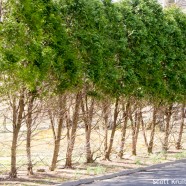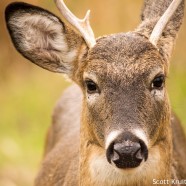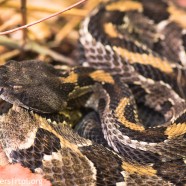Deer Overbrowsing
I may not be an expert on vegetation, especially ornamental, but something seems…not right…here. You have probably seen similar sights in the last couple of months now that the ice and snow have fully cleared as White-tailed Deer did a number on anything they could eat in the Northeast. Everything just above their head is bright and green, and parts below are bare and brown. Our overpopulation of deer wipes the forest floors clean to the point where they must pick at what we could call scraps like these in our neighborhoods. Some people may object to wolves in their backyards,...
Read MoreTick Season
Tick season has arrived! Whether it is a warm and sunny day or a cool, cloudy one you can now expect to find some ticks outdoors, especially in edge habitats. In Western New York this is rarely a problem, and only a handful of sites have any ticks to be found. However, in places like Connecticut the population is robust, booming, and filled with diseases. Any time that you or your dog goes outdoors this spring, and throughout the year really, you should be mindful of ticks. The best way to protect yourself is to stay covered, change your clothes, check yourself from head to toe, and shower...
Read MoreCrazy Climate Maps
One benefit of the continual and seemingly never-ending cold and snowy winter (also known as spring now!) is that it provides us a tremendous opportunity to engage and educate people. The topic of our weather invariably comes up in every day life, especially now, and when someone complains about their heating bill or their aching back (thanks, shoveling!) you can mention to them that all of this may likely be due to our changing climate. The above graphic shows our globe and the general temperature percentile categories for meteorological winter, December through February, via NOAA’s...
Read MoreDon’t feed the deer
As tempting as it may be it is NOT healthy for the wild White-tailed Deer, or you, if they are fed by humans. I can recall some winter days as a child where hungry deer were laying in our backyard for prolonged periods. The winter season can be very difficult on these friendly mammals but it is not in their best interest, health or safety to start eating anything we put out whether it is for caring about an individual, an attempt to protect other plants, to supplement the population, or any other reason. The Maine governmental website has an extremely extensive and detailed list of why we...
Read MoreTimber Rattlesnake hunting
Timber Rattlesnakes have been drastically reduced in population in many areas of the Northeast. This drop correlates extremely well to regions where Lyme Disease has skyrocketed due to high levels of ticks. The University of Maryland and Edward Kabay found that rattlesnakes hunted small mammals to the degree that it kept the disease in check in areas where the population is strong. A single adult male can consume 2,500-4,500 ticks every year! If Timber Rattlesnake populations were at historic levels throughout their previous range maybe none of us would have to worry about ticks on ourselves...
Read More








